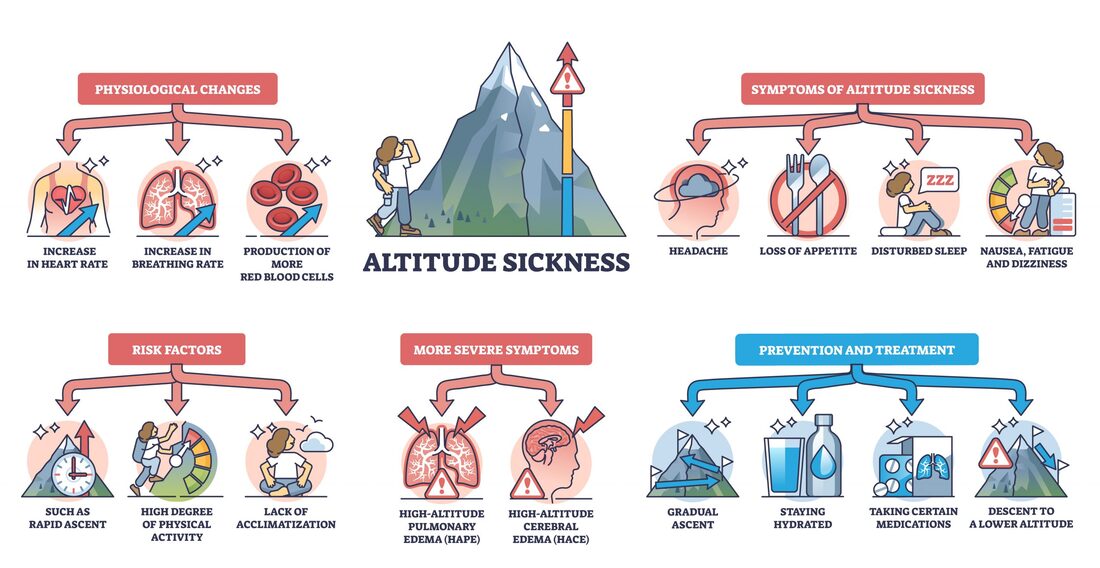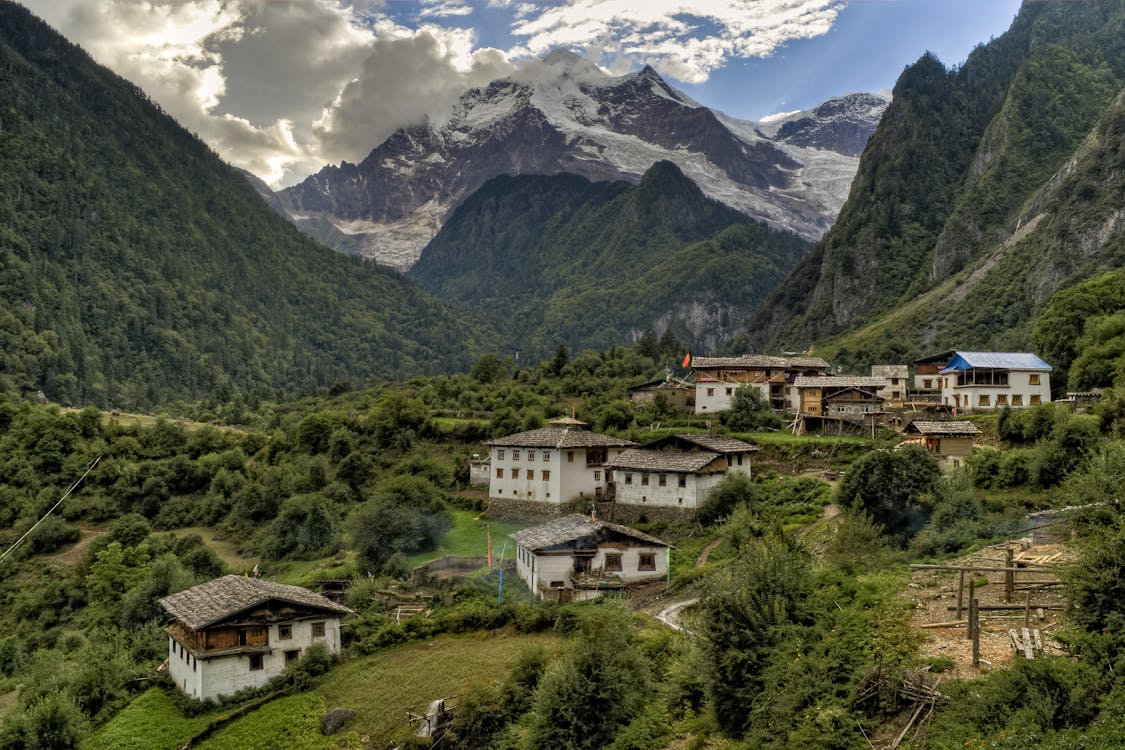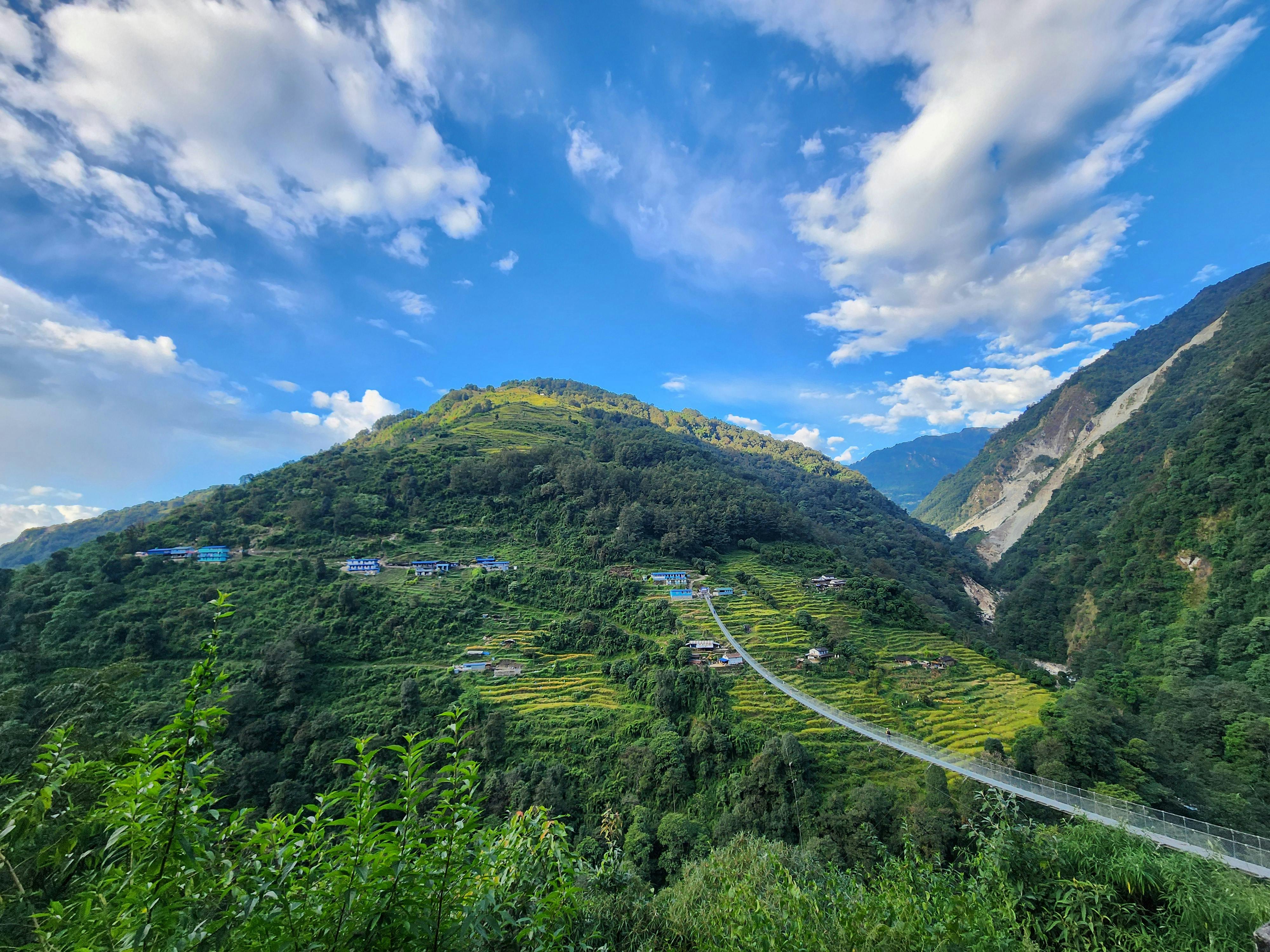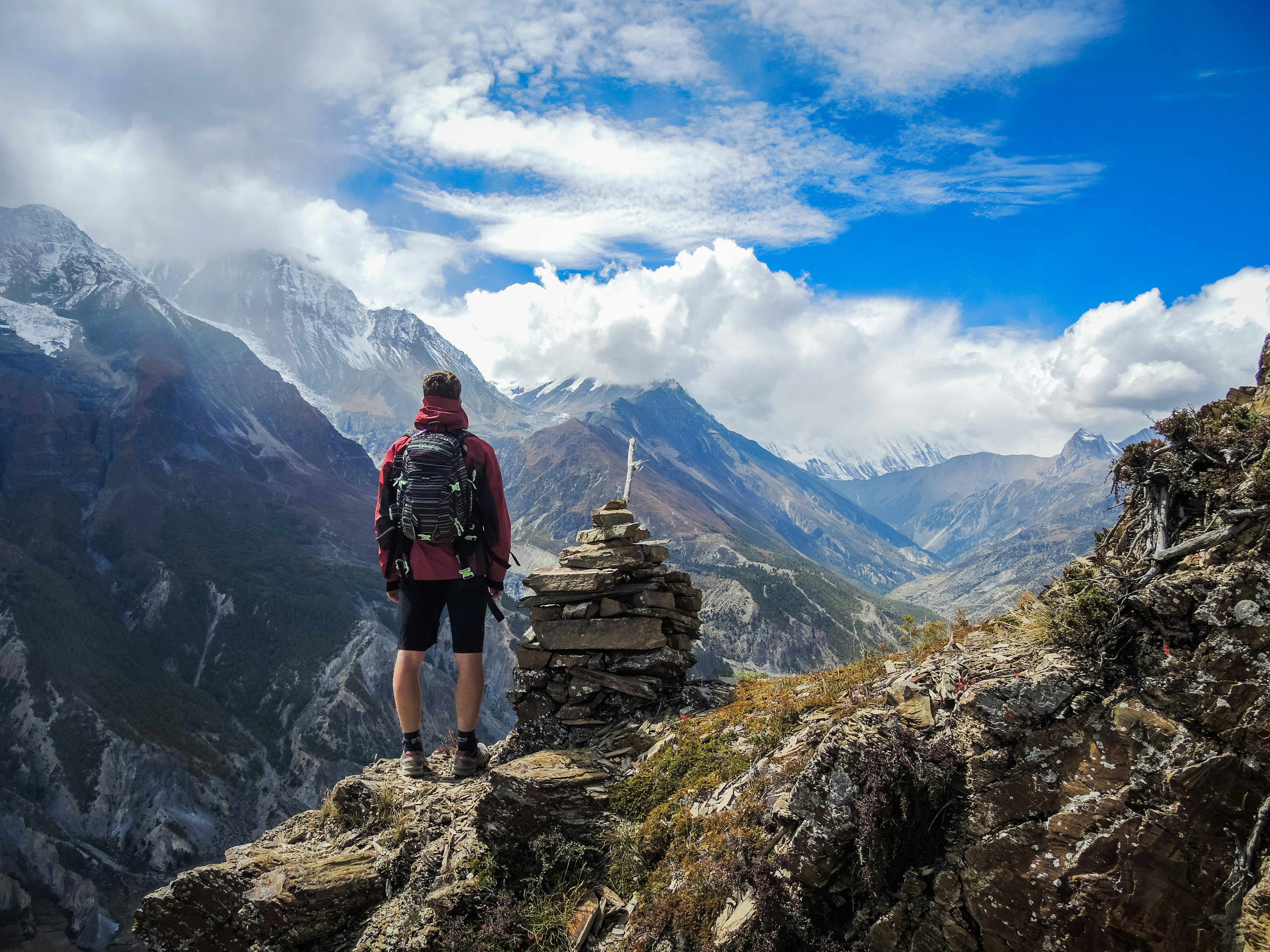Understanding Altitude Sickness: Causes, Symptoms, and Remedies
Trekking in the Himalayas offers breathtaking views, unmatched serenity, and thrilling adventures. However, altitude sickness is a serious concern for trekkers venturing to high altitudes. This article delves deep into what altitude sickness is, its symptoms, prevention, remedies, and how to safely enjoy your trek.
What is Altitude Sickness?
Altitude sickness, also called Acute Mountain Sickness (AMS), occurs when your body struggles to adapt to the lower oxygen levels at high elevations. It typically affects those ascending quickly to altitudes above 2,500 meters (8,200 feet).
Causes of Altitude Sickness
The primary cause of altitude sickness is the decreased availability of oxygen in the air as altitude increases. Key contributing factors include:
- Rapid ascent without acclimatization.
- Overexertion during the ascent.
- Dehydration or inadequate nutrition.
- Personal susceptibility or pre-existing conditions.
Symptoms of Altitude Sickness
Mild Symptoms (AMS):
- Headache
- Nausea or vomiting
- Loss of appetite
- Fatigue or weakness
- Dizziness
Moderate Symptoms:
- Shortness of breath at rest
- Severe headaches unrelieved by medication
- Difficulty sleeping
Severe Symptoms:
- High-Altitude Pulmonary Edema (HAPE): Fluid in the lungs, causing breathlessness and a frothy cough.
- High-Altitude Cerebral Edema (HACE): Swelling of the brain, leading to confusion, hallucinations, and loss of coordination.

Risk Factors
Certain factors increase the likelihood of altitude sickness:
- Rapid ascent (e.g., flying directly to high altitudes).
- Trekking above 3,500 meters without acclimatization.
- Pre-existing health issues like respiratory or cardiovascular conditions.
- Lack of physical fitness.
- Personal sensitivity to altitude changes.
How to Prevent Altitude Sickness
-
Ascend Gradually:
- Limit altitude gain to 300-500 meters per day after 3,000 meters.
- Spend an extra day acclimatizing every 1,000 meters.
-
Stay Hydrated:
- Drink 3-4 liters of water daily to maintain hydration.
- Avoid alcohol and caffeine, which can dehydrate your body.
-
Eat Properly:
- Opt for high-carbohydrate meals to maintain energy levels.
- Avoid heavy, fatty, or processed foods.
-
Acclimatization:
- Take rest days at intervals to allow your body to adapt.
- Engage in light activities during acclimatization days.
-
Climb High, Sleep Low:
- Trek higher during the day but return to a lower altitude to sleep.
-
Medication:
- Take preventive medications like Acetazolamide (Diamox) as prescribed.
Remedies for Altitude Sickness
1. Rest and Hydration:
- Stop ascending immediately if symptoms appear.
- Rest, hydrate, and eat to support recovery.
2. Medication:
- Diamox: Helps speed up acclimatization.
- Ibuprofen/Paracetamol: Relieves headaches.
- Dexamethasone: Prescribed for severe cases of AMS or HACE.
3. Descent:
- If symptoms worsen, descend to a lower altitude immediately.
- A descent of even 500 meters can make a significant difference.
4. Oxygen Therapy:
- Supplemental oxygen can relieve severe symptoms temporarily.
- Portable oxygen cylinders are available for emergencies.
5. Hyperbaric Chambers:
- A portable chamber simulates lower altitudes and can provide temporary relief.

Emergency Situations
-
HAPE Symptoms:
- Extreme breathlessness, bluish lips or fingertips, chest congestion.
- Immediate descent is critical, along with oxygen therapy.
-
HACE Symptoms:
- Confusion, inability to walk straight, drowsiness, or unconsciousness.
- Immediate descent and medical attention are lifesaving.
Best Practices for Trekkers
-
Know Your Limits:
Listen to your body and avoid pushing beyond your capacity. -
Trek with Experienced Guides:
Guides can monitor symptoms and offer assistance during emergencies. -
Carry Essential Gear:
- First-aid kit
- Diamox and other medications
- Portable oxygen cylinder
-
Monitor Weather and Conditions:
Sudden changes in weather can increase risks.
FAQs About Altitude Sickness
1. Can anyone develop altitude sickness?
Yes, regardless of fitness level, anyone can experience it.
2. Does fitness reduce the risk?
Fitness helps with endurance but doesn’t eliminate the risk.
3. How long does acclimatization take?
It varies but typically takes 1-2 days at each elevation increase.
4. Is Diamox safe for everyone?
Consult a doctor before use, especially if you have allergies or kidney issues.
Altitude Sickness in the Himalayas
In Nepal, popular trekking destinations like Everest Base Camp, Annapurna Circuit, and Langtang Valley often involve high-altitude challenges. Here’s how to manage altitude sickness in these treks:
- Everest Base Camp (5,364m): Allow at least 10-12 days for the trek, with acclimatization stops at Namche Bazaar and Dingboche.
- Annapurna Circuit (5,416m - Thorong La Pass): Plan rest days in Manang or nearby areas.
- Langtang Valley (4,984m - Tserko Ri): Acclimatize in Kyanjin Gompa before ascending further.

Conclusion
Altitude sickness is a manageable yet critical concern for trekkers exploring high-altitude regions like the Himalayas. By understanding its symptoms, taking preventive measures, and knowing the remedies, you can ensure a safer and more enjoyable trekking experience. Always trek responsibly, listen to your body, and prioritize safety over speed.
Prepare well, trek safely, and enjoy the incredible journey to the Himalayas!



